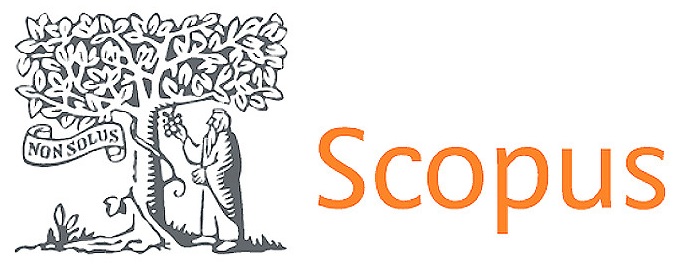The Flipped Classroom as a Methodological Strategy in Training and Education for the Exercise of Optional Voting from the Citizenship Education Subject in High School Students in Ecuador
DOI:
https://doi.org/10.56294/mw2024636Keywords:
Flipped Classroom, optional voting, Citizenship Education, electoral participation, quantitative methodology, high schoolAbstract
This article addresses the implementation of the Flipped Classroom as a methodological strategy for training and educating high school students in Ecuador on the exercise of optional voting, within the framework of the Citizenship Education subject. The problem lies in the lack of understanding and active participation of students in the electoral process, limiting their ability to exercise their voting rights in an informed manner. The main objective is to analyze the effectiveness of the Flipped Classroom in improving students' understanding and motivation regarding optional voting. A quantitative methodology was used, with surveys administered to students before and after the implementation of this strategy. The results show an increase in motivation, understanding of the electoral process, and awareness of the importance of optional voting. Additionally, students reported higher levels of active participation and critical reflection on their role as voters. It is concluded that the Flipped Classroom can be an effective tool for teaching citizenship and electoral participation, promoting more autonomous, meaningful, and practice-oriented learning.
References
1. Alvarracín Alvarez AM, Guanopatín Jinéz JP, Benavides Herrera PV, Alvarracín Alvarez AM, Guanopatín Jinéz JP, Benavides Herrera PV. Aula Invertida y Trabajo Cooperativo para promover Habilidades Cognitivas Superiores. Actual Investig Educ. 2022;22(2):257-289. doi:10.15517/aie.v22i2.48865.
2. Araya Moya SM, Rodríguez Gutiérrez AL, Badilla Cárdenas NF, Marchena Parrita KC. El aula invertida como recurso didáctico en el contexto costarricense: Estudio de caso sobre su implementación en una institución educativa de secundaria. Rev Educ. 2021;46(1):103-119. doi:10.15517/revedu.v46i1.44333.
3. Artieda MAM, Bernal SAM. Aula invertida como estrategia didáctica para el aprendizaje de los estudiantes en formación docente. 2022;8.
4. Cedeño-Escobar MR, Vigueras-Moreno JA. Aula invertida una estrategia motivadora de enseñanza para estudiantes de educación general básica. 2020;6(3):878-897.
5. Consejo Nacional Electoral (CNE). Análisis Estadísticos – Consejo Nacional Electoral – CNE Ecuador. 2022. Disponible en: https://www.cne.gob.ec/analisis-estadistico/.
6. Constitución de la República del Ecuador. [Internet]. 2021. Disponible en: https://www.defensa.gob.ec/wp-content/uploads/downloads/2021/02/Constitucion-de-la-Republica-del-Ecuador_act_ene-2021.pdf.
7. Fernández J, Sánchez M. La educación cívica a través del Aula Invertida: Un análisis de su impacto en el pensamiento crítico de los estudiantes. Rev Investig Educ. 2021;28(3):245-258.
8. García A, Martínez R, López P. El Aula Invertida en la enseñanza de la ciudadanía: Resultados de un enfoque participativo en educación secundaria. Educ Democr. 2020;25(2):89-104.
9. Pérez L, Martínez E. La influencia del Aula Invertida en el aprendizaje cívico de los estudiantes de secundaria en México. Rev Latinoam Educ Soc. 2019;22(1):134-145.
10. Educatika (Director). Cómo usar la metodología del aula invertida flipped classroom para capacitación [Video]. YouTube. 2022 Sep 12. Disponible en: https://www.youtube.com/watch?v=xDTn79vRB5c.
11. Fidalgo-Blanco Á, Sein-Echaluce ML, García-Peñalvo FJ. Ventajas reales en la aplicación del método de Aula Invertida-Flipped Classroom. 2019. doi:10.5281/ZENODO.3610578.
12. Jaramillo Quiñonez ÁG, Guadamud Zambrano M. El aula invertida para mejorar el aprendizaje de la conquista de América en estudios sociales. Didasc@lia: Didáctica y Educación. 2021;12(4):94-107.
13. Ley Orgánica Reformatoria a la Ley Orgánica de Educación Intercultural. [Internet]. 2021. Disponible en: https://educacion.gob.ec/wp-content/uploads/downloads/2021/05/Ley-Organica-Reformatoria-a-la-Ley-Organica-de-Educacion-Intercultural-Registro-Oficial.pdf.
14. Mier-Acosta M, Chuga-Martínez L, Jiménez-Tarapuez K, Santander-Moreno J. Impacto sociopolítico de la falta de interés en el voto facultativo de los adolescentes. 2024;IX(1).
15. Ordoñez Ocampo BP, Ochoa Romero ME, Erráez Alvarado JL, León González JL, Espinoza Freire EE, Ordoñez Ocampo BP, Ochoa Romero ME, Erráez Alvarado JL, León González JL, Espinoza Freire EE. Consideraciones sobre aula invertida y gamificación en el área de ciencias sociales. Rev Univ Soc. 2021;13(3):497-504.
16. Servicio de Innovación Educativa de la UPM. Flipped Classroom (Aula invertida). Madrid: Universidad Politécnica de Madrid; 2020 Jul. Disponible en: https://innovacioneducativa.upm.es/guias-pdi.
17. Silva O. ¿Qué es el voto facultativo? El Comercio. 2023 Ene 16. Disponible en: https://www.elcomercio.com/actualidad/politica/voto-facultativo-elecciones-registro-electoral-sufragio.html.
18. Vélez-Luna AA, Macías JOL, Segura-Mariño AG. Percepciones de los jóvenes del voto facultativo, previo a las presidenciales del 2021 en Ecuador. Cienc Lat Rev Cient Multidiscip. 2022;6(3):3944-3963. doi:10.37811/cl rcm. v6i3.2505.
Published
Issue
Section
License
Copyright (c) 2024 Janeth Carolina Alvarado Alquinga, Marco Vinicio Nugra Pachar , Janina Mariuxi Pineda Guerrero , Marta Cecilia Ibarra Freire, Yilena Montero Reyes (Author)

This work is licensed under a Creative Commons Attribution 4.0 International License.
The article is distributed under the Creative Commons Attribution 4.0 License. Unless otherwise stated, associated published material is distributed under the same licence.






